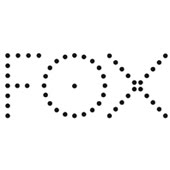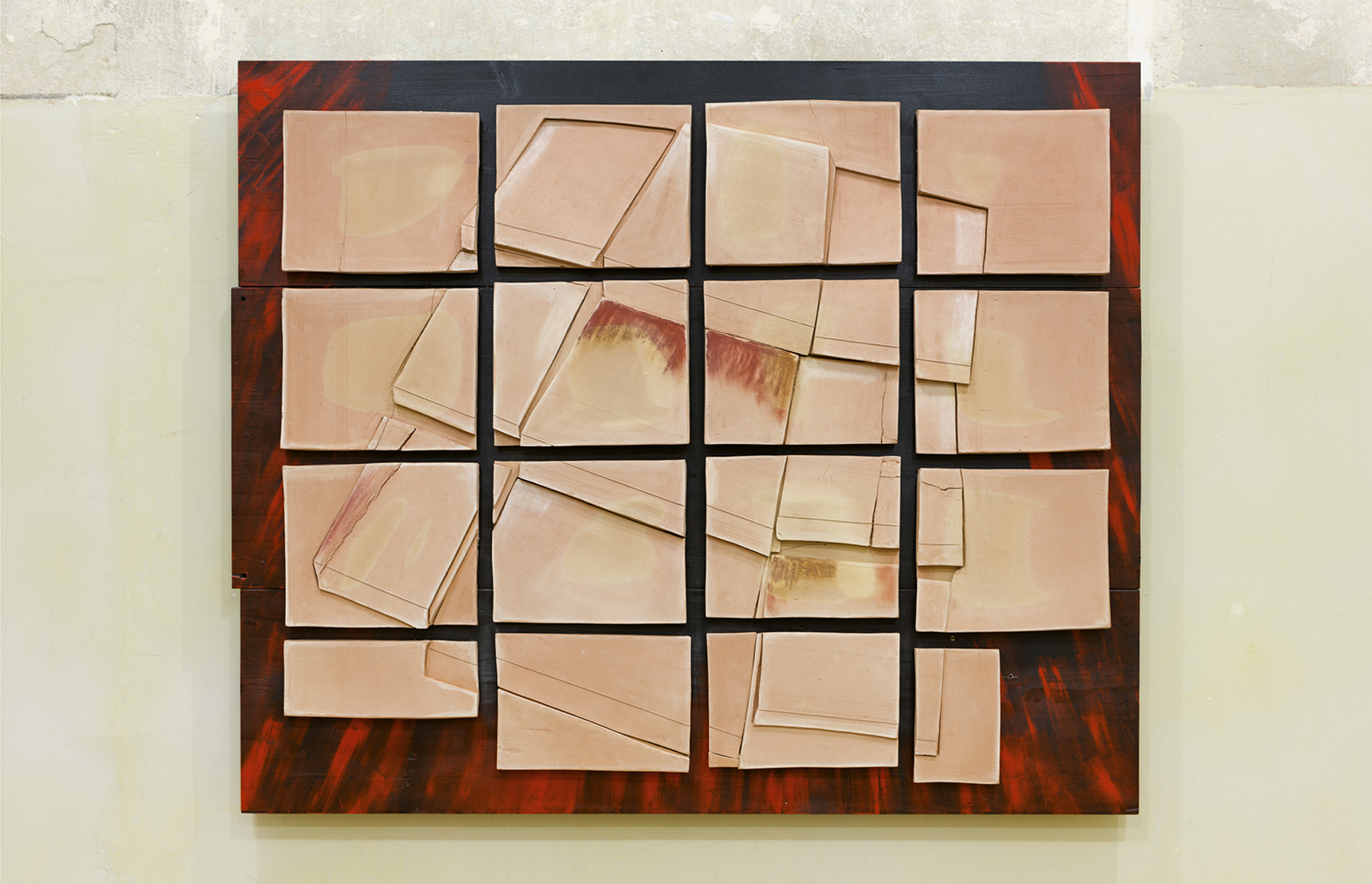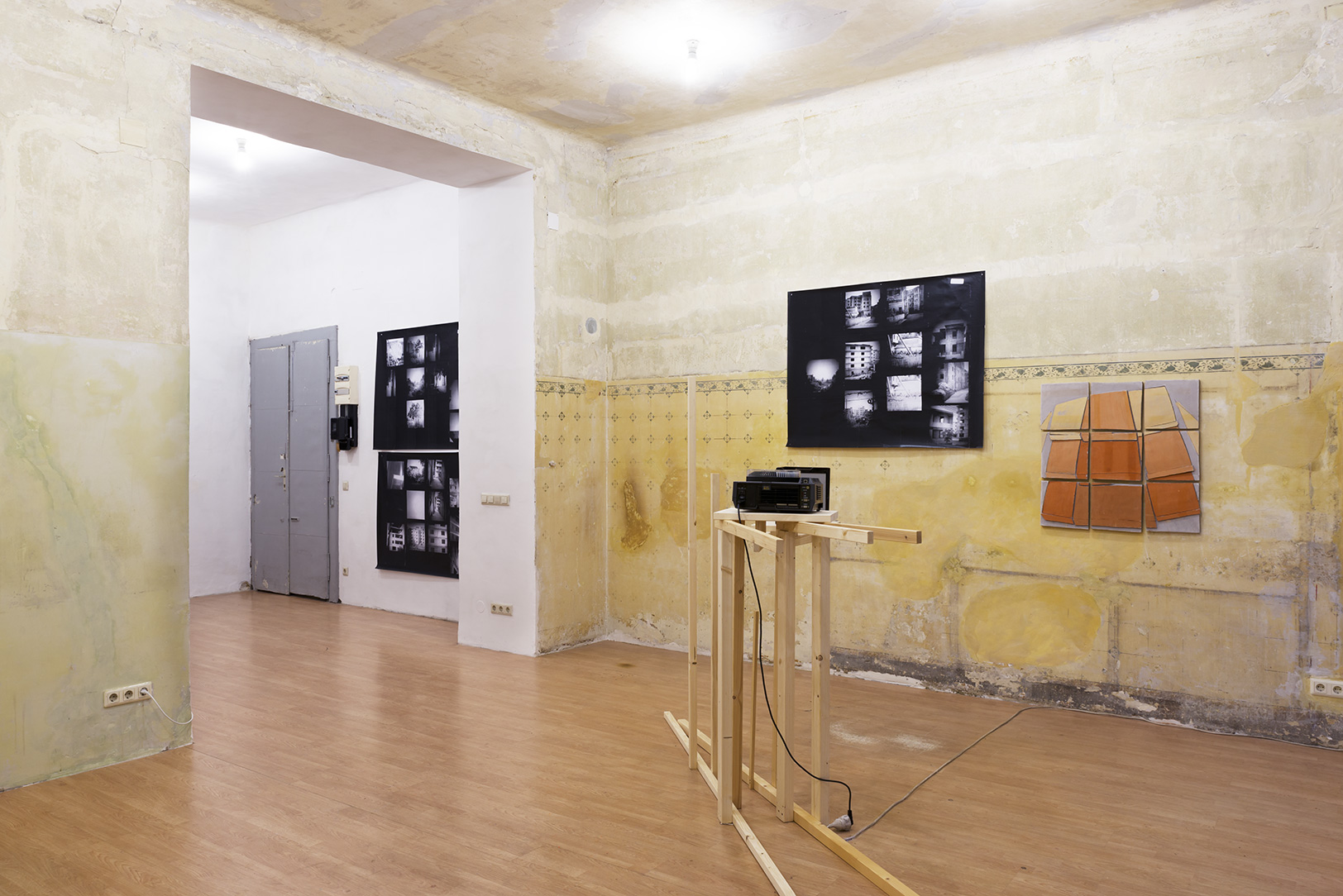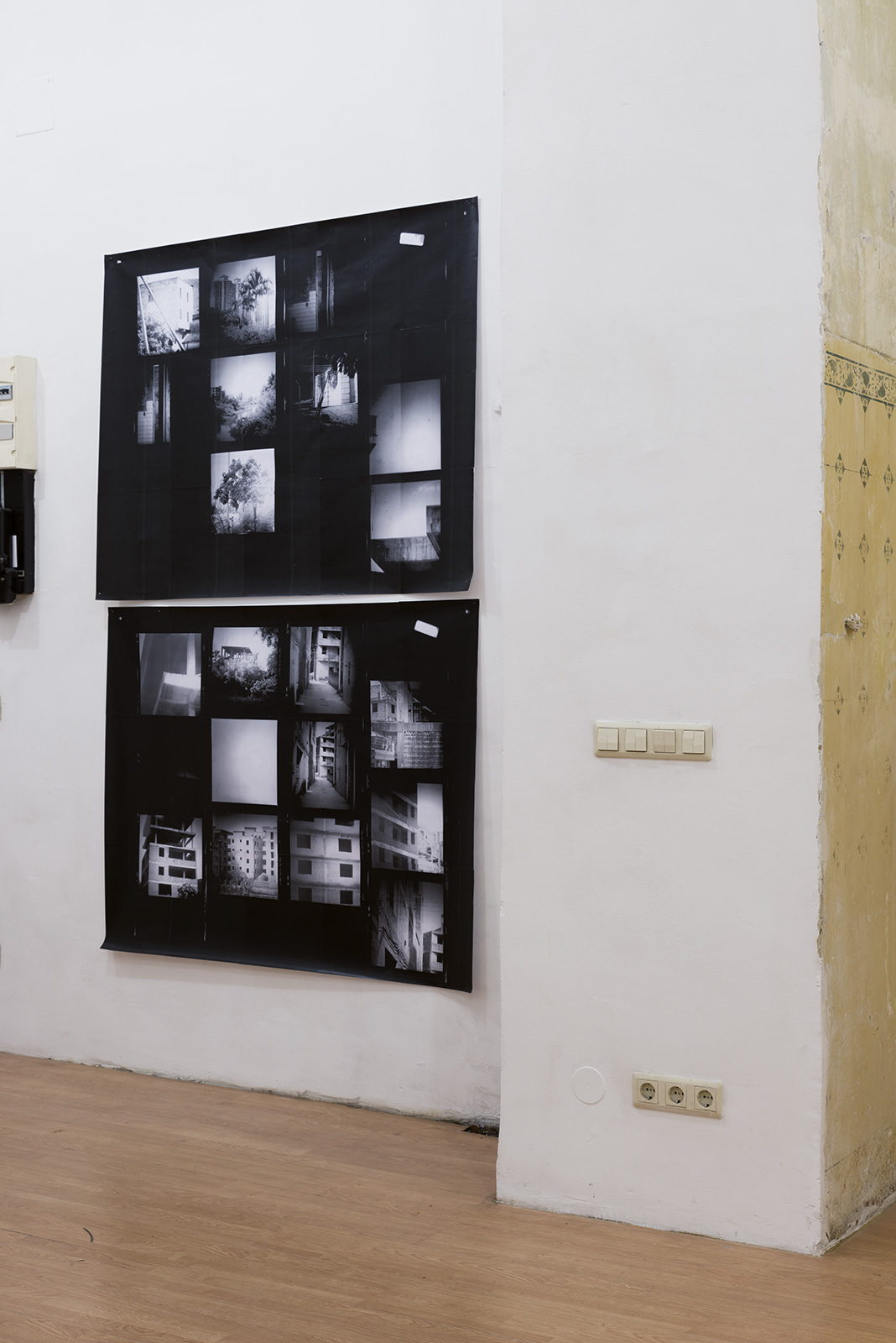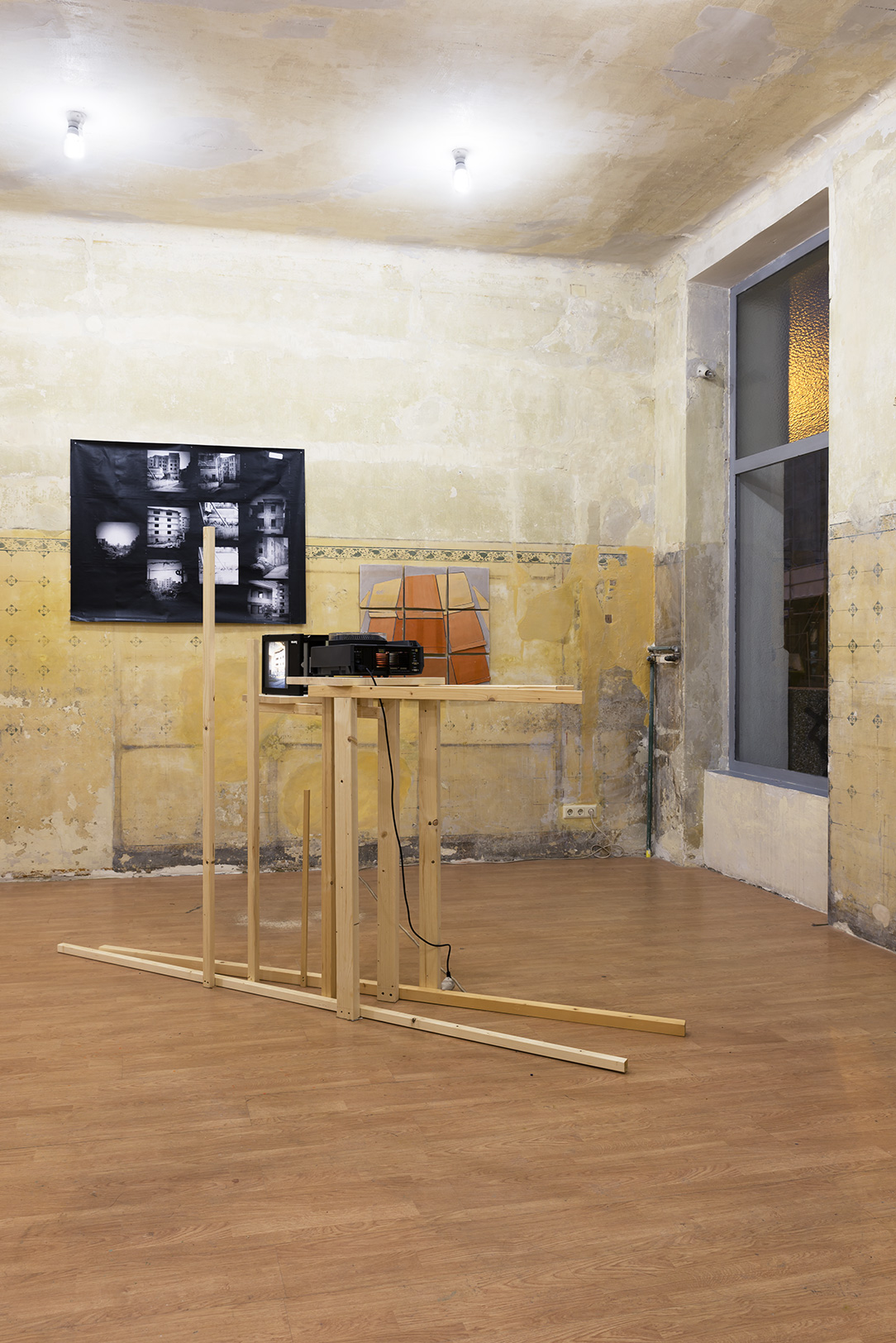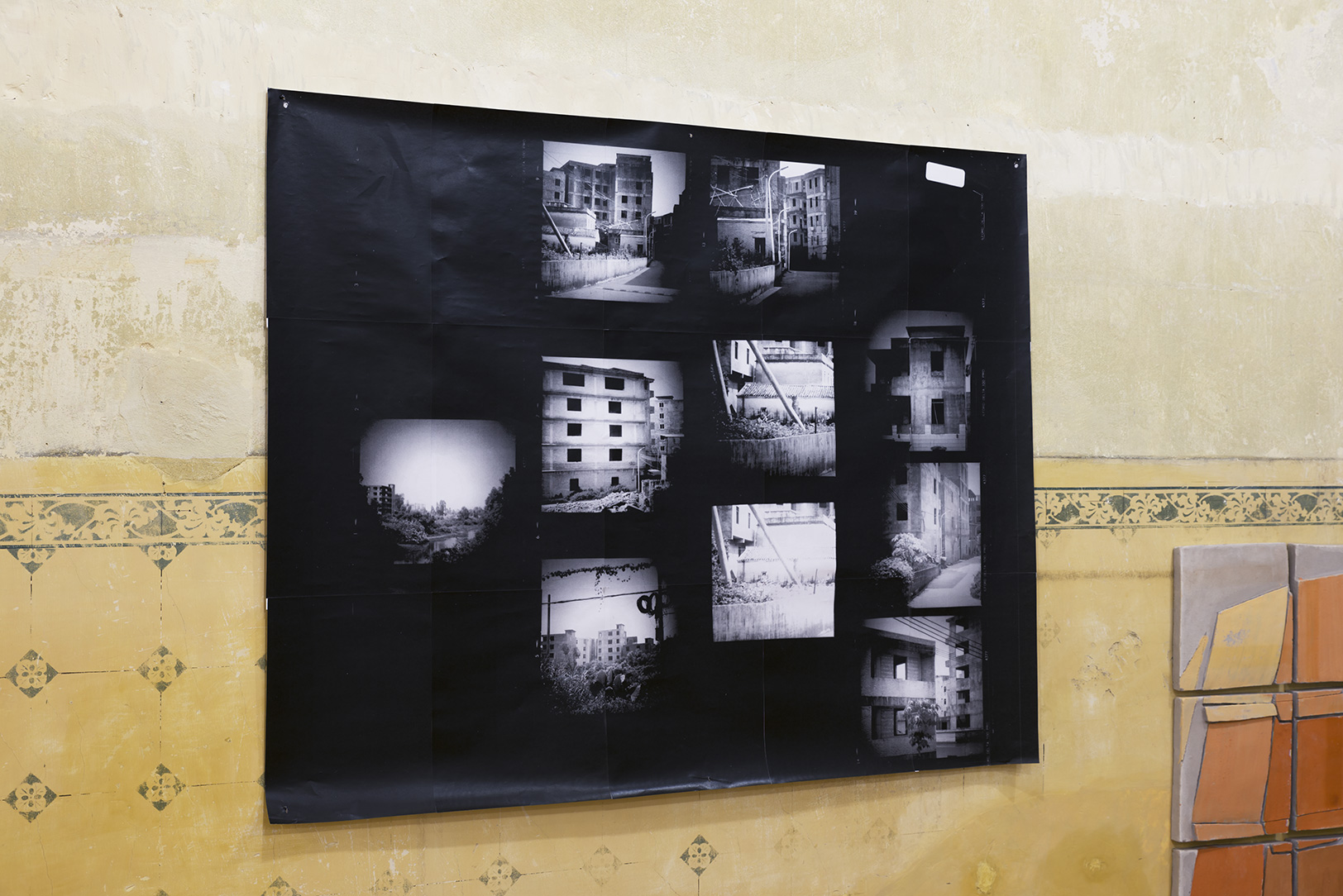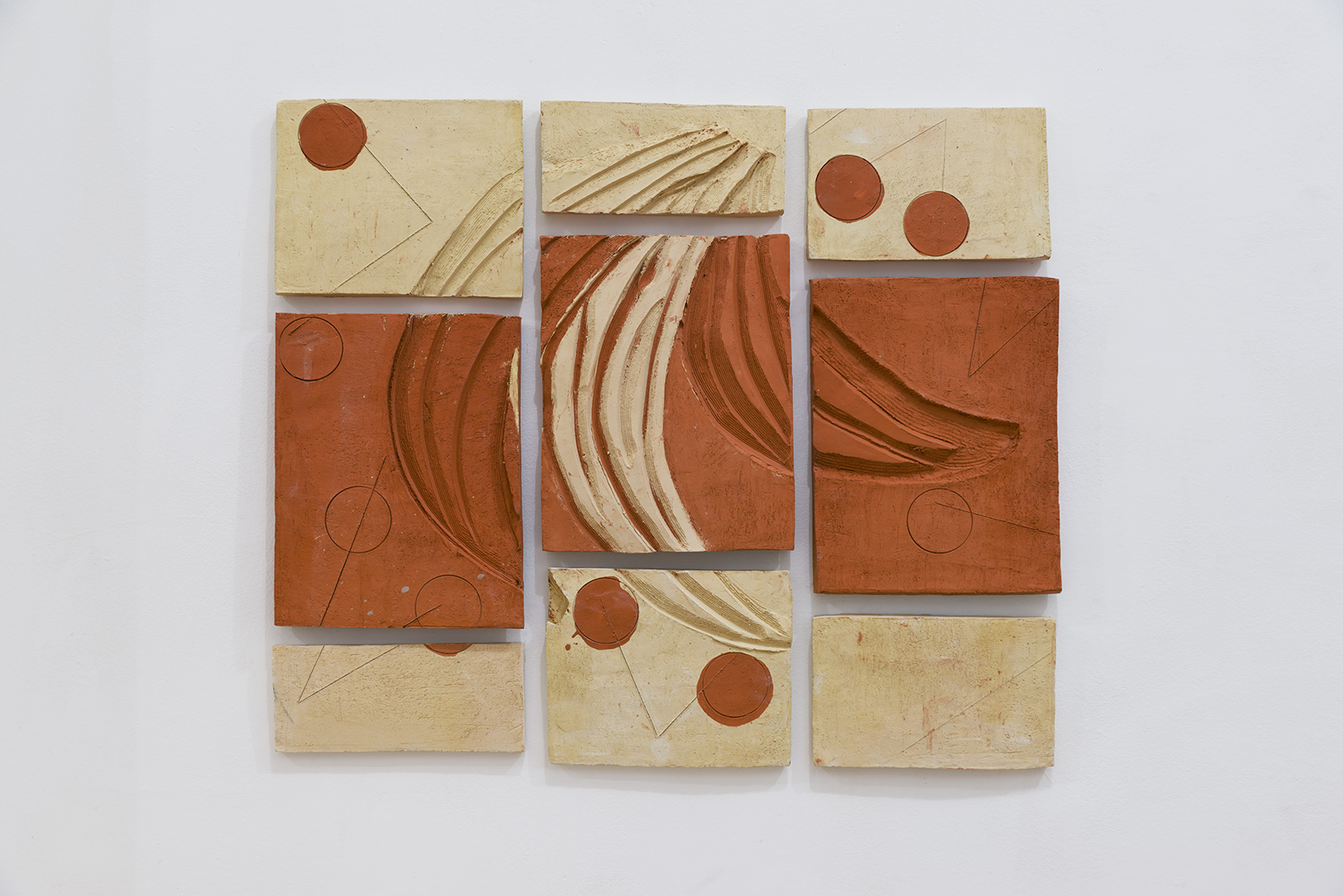Anna Hofbauer
Anna Hofbauer
Almost everything I know about “mein Vulkan bricht nur für dich nicht aus Anna Hofbauer”
[my volcano doesn’t erupt only for you, Anna Hofbauer]
at the moment – what I have seen and heard about it – was delivered to me in two black boxes. One, hand-sized, that can’t be opened; the other, the size of a notebook that can. One of their sides is covered with a glass top, and by some kind of trick I know nothing about they are lit up from the inside, giving me an insight on their contents. The tip of my right forefinger runs over the glass of the smaller box without being able to feel much. The glass is perfectly smooth, possibly a bit of dust, grease, just a slight irritation caused by some dried fluid, which is scratched away with a fingernail.
My eye sees green and white pads filled from top to bottom with black letters moving away underneath the glass. In between small drawn figures repeating time and again a certain movement. Two small upright dogs holding an incredibly long stick in each paw that they tap against each other whilst raising the eyebrows. A grinning boy in a cat costume, giving a thumbs up, winking. A rotating ghostly figure that stretches its face around its cheeks, only to let it spring back again. Photographs amongst all this. The fingertip touches one, now covering the whole glass top. Now running from left to right. Successively, views from the studio follow – details of treated clay slabs, black-and-white photographs hanging on a wall, first a long shot, then a close-up, slips of paper with blood tests, a desk seen from above. On its top, tools – clamps, scissors, gloves, glue – and more slabs of raw, unglazed clay, some of them in clamps. A comic book held open by a hand with red fingernails. People around a blue billiard table in a wood-panelled room. The finger stops at a photograph of children climbing on a bronze sculpture made of piled massive parts. It has an odd gleam and corrugated shades; a shot of a slide projection. The tips of thumb and forefinger are pressed against each other and spread apart on the glass. Twice. A strange gesture, especially if you misplace it. I repeat it with my hand in the air at eye level but I can’t ascribe any meaning to it. From your point of view maybe: L-O-L!
Instead, now in close-up, a girl’s face appears who has managed to climb to the top of the sculpture and proudly smiles at the camera. At how many by now?
If I mull over this for too long, my fingers remain idle, the backlight switches off, the glass turns black; the space behind dies away and presents another in which I recognise my own reflection. Almost black-in-black, only the white of the eye stands out.
But precisely because of this analogy with black glass, I’m more interested in the black of the eye. If you move close enough to your bathroom mirror and try to look into it, you will also notice that your eye is a mirror in the mirror, and in it you see your own face. Possibly one of the few expressions this is capable of.
For even if the well-known phrase of ‘the eye as the window to the soul’ suggests something else, taken by itself it is deeply expressionless. What can it disclose apart from a couple of clues regarding a person’s health, if it is clouded or reddened? Indeed, the colouring around the black may carry some culture-bound connotations, nevertheless it essentially remains the same except from its scale when the pupil is widened or narrowed. What can this tell us? Bright or dark surroundings. High, or not.
The houses’ windows in Ghost Stories cannot reflect. They remain without glass panes. Also their other functions, of letting in light and allowing a view, will probably never take effect because the houses they are part of only had another storey built atop in order to increase compensation payments when the settlement in southern China, where they stand, is knocked down.
The exploration of a location, however, follows a principle that we have already dismissed. Photographed slides projected onto a matt screen, a mirror in between, and finally then glass again that the camera zooms in to or zooms out of in order to select its section. The narrative of succession is the result of the order of shots on the film roll; the cuts are to allow for more negatives to fit on the paper for exposure. With the contact sheet, in fact also touch is called into play, in this case that of two smooth surfaces. The light treats all equally, particularly equally long, even if some could have done with more, some with less time. At this point, the feature of the houses’ empty orbital cavities to let in light does play a role, after all. For only due to this do they receive their gloom on the exposed paper.
For the fingers it would be more interesting to actually be able to touch the reliefs they find behind the glass. But I assume that even if I stood in front of them they would remain untouched. Although the form and visual impression are due to irregularities and rises on the surface, it is ultimately and above all a view, a relief. Because with this word I think too strongly of geology and, strained by blackness, imagine looking onto the mountain landscape of Monte Negro and picture how erosion has caused this, I make a serious mistake. For unlike the rock from which the mountains are scratched out of, clay is soft when it is formed. If the surface of Cherries and Bananas evoked a different impression, Anna Hofbauer’s voice explains to me pouring out from a silvery metal crack in the glass whilst I place my ear on it, then this were due to chamotte in the clay. Fired, ground clay that is added to the rest of the clay-and-water mixture, which stays hard and sticks onto the tools when they cut through the soft material, and leaves marks like scratches. In the motif, we encounter another form of looking through the glass. Behind it, three reels divided into sections with coloured symbols are rotating, set off by a pull of the lever. When three of the same stop next to each other, the machine is fired up, spilling a strumming gush of coins.
Both Volcano reliefs show this segmentation, too. They consist of multiple tiles on which smooth parts appear slightly tilted, also partly contrasted by different types of clay that extend the tilt across the grid and together create an abstract depiction of the eponymous motif. Whilst still running my finger over the surface, I discover a possible formal inspiration in the logo of an online casino of the same name, which appears as advertisement in shots of a Southeast European city, and I slowly realise that the pattern’s smoothness has not called any geological associations. And yet, the idea that volcanoes are mountains formed not through erosion but rather through eruption, respectively through first very hot and malleable masses that solidify when they cool down could be quite revealing.
I ignored the aspect of great heat being able to transform matter as banality, although I could see how fire(ing) had at least changed the colours of the clay slabs and I had been told that pieces chip if air is knead in when moulding.
Equally crucial is the scorching heat for forming glass, the material I had so close contact to, which once got glowing can be blown up like a balloon. Allegedly, it always remains to be a fluid, however, even if a hypothermic one. One can notice this in old windows, which thicken towards their bottom as the glass has slowly flowed downwards over the years. The panes that I look at and touch may well have a different composition, having lost this quality. If I remain still however and let the large glass showing a white sheet turn black, and then steadily stare into this blackness for several moments, the spheres of light begin to blow up and flow across it, among others in the colours of cherries and bananas. Without a single sound, and no volcano eruption against the nocturnal sky, it nevertheless blends its own light into the room’s darkness.
Clemens Roesch
transl. Jeanette Pacher
Opening hours:
During the current exhibition!
Sat 15 – 21 h
and by appointment!
Contact:
Marxergasse 16
A-1030 Wien
email: offspace(at)chello.at
Kindly supported by:
